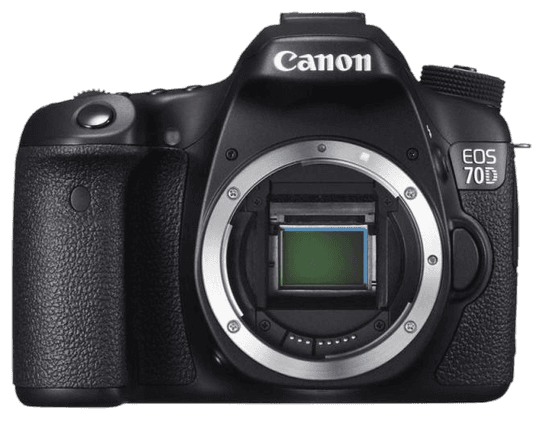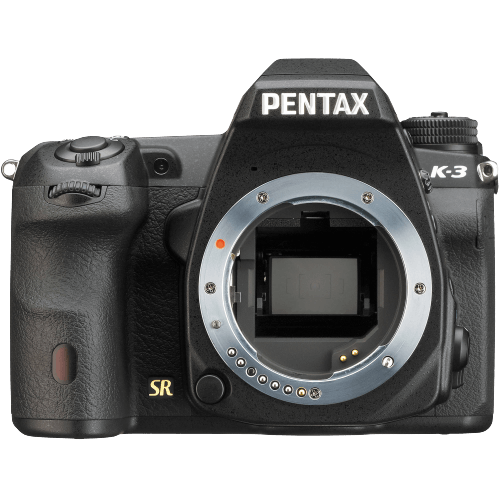Canon EOS 70D vs Pentax K-3 Comparison
Canon EOS 70D

Pentax K-3

The Pentax K-3 outperforms the Canon EOS 70D with a score of 69 to 60. Both cameras are DSLRs released in 2013, with the K-3 announced on October 8th and the 70D on July 2nd. They share similar sizes, with the K-3 measuring 131 x 100 x 77mm and the 70D at 139 x 104 x 79mm. However, the K-3 is slightly heavier at 800g compared to the 70D’s 755g.
The Pentax K-3 has a higher score due to its superior performance and features. On the other hand, the Canon EOS 70D is a more affordable option with a launch price of $1,199 compared to the K-3’s $1,300.
These differences in scores reveal the better overall performance of the Pentax K-3. However, the Canon EOS 70D remains a viable option for those seeking a more budget-friendly camera.
Canon EOS 70D vs Pentax K-3 Overview and Optics
The Pentax K-3 emerges as the winner in the optics comparison, with a score of 74/100, while the Canon EOS 70D scores 58/100. Both cameras share common specifications, such as the CMOS sensor type, APS-C sensor size, and similar processors – Digic 5+ for the Canon EOS 70D and Prime III for the Pentax K-3.
The Pentax K-3 surpasses the Canon EOS 70D with its higher megapixel count of 24, compared to the Canon’s 20.2. This difference allows the K-3 to capture more detailed images. Additionally, the K-3 has a faster shooting speed of 8.3 frames per second, providing an advantage in capturing fast-moving subjects. The K-3 also has a superior DXOMARK sensor score of 80, compared to the 70D’s score of 68, indicating better overall image quality. Furthermore, the K-3 features image stabilization, which the 70D lacks, ensuring sharper images in challenging shooting conditions.
On the other hand, the Canon EOS 70D has the advantage of a more extensive lens selection due to its Canon EF-S lens mount. This feature provides users with a broader range of lenses to choose from, catering to various photography needs and preferences.
Taking these factors into account, the Pentax K-3 stands out as the better camera in terms of optics, with superior image quality, faster shooting speed, and image stabilization. However, the Canon EOS 70D still holds its ground with a wider lens selection, which may appeal to photographers seeking versatility. Ultimately, potential buyers should weigh these considerations based on their specific photography requirements and preferences.
Canon EOS 70D vs Pentax K-3 Video Performance
The Pentax K-3 outperforms the Canon EOS 70D in video capabilities, with a video score of 70/100 compared to the 70D’s 43/100. Both cameras share some common specifications, such as Full HD video resolution and maximum video dimensions of 1920 x 1080. However, the K-3 surpasses the 70D in other aspects, contributing to its higher score.
The Pentax K-3 offers a higher maximum video frame rate of 60fps, which is double the 30fps offered by the Canon EOS 70D. This higher frame rate allows for smoother video playback and better slow-motion effects in post-production. Additionally, the K-3 has built-in time-lapse functionality, which the 70D lacks. Time-lapse is a popular feature for capturing dynamic scenes, such as sunsets or cityscapes, over an extended period.
Despite its lower video score, the Canon EOS 70D does have some advantages over the Pentax K-3, although they may not be as significant for videographers. For instance, the 70D is known for its excellent autofocus system, which can be beneficial for video shooting. However, this advantage may not be enough to make up for the superior video capabilities of the K-3.
Taking all factors into consideration, the Pentax K-3 is the clear winner in terms of video capabilities. With its higher video frame rate and built-in time-lapse functionality, the K-3 offers more versatility and potential for creative expression in video production. While the Canon EOS 70D may have some advantages in other areas, it falls short in comparison to the K-3’s superior video performance.
Canon EOS 70D vs Pentax K-3 Features and Benefits
The Canon EOS 70D emerges as the winner with a feature score of 70/100, while the Pentax K-3 trails behind with 59/100. Both cameras have a few specifications in common, such as a screen size of approximately 3 inches and a similar screen resolution (1,040,000 dots for the EOS 70D and 1,037,000 dots for the K-3). Additionally, neither camera has GPS or Bluetooth capabilities.
The Canon EOS 70D outshines the Pentax K-3 in several ways. One key advantage is its touchscreen feature, which the K-3 lacks. This allows for easier navigation and control of the camera’s settings. Furthermore, the EOS 70D has a flip screen, enabling users to shoot from various angles and positions comfortably. Lastly, the EOS 70D comes with Wi-Fi, making it convenient for users to transfer files and control the camera remotely.
On the other hand, the Pentax K-3 has a slightly larger screen size at 3.2 inches compared to the EOS 70D’s 3-inch screen. However, this minor advantage does not outweigh the additional features offered by the Canon EOS 70D.
Taking all these points into consideration, the Canon EOS 70D proves to be a better camera due to its enhanced features such as the touchscreen, flip screen, and Wi-Fi capabilities. These additional features provide users with a more versatile and user-friendly experience compared to the Pentax K-3. Although the K-3 has a marginally larger screen, it falls short in offering the same level of convenience and functionality as the EOS 70D.
Canon EOS 70D vs Pentax K-3 Storage and Battery
The Pentax K-3 wins in the storage and battery category with a score of 63/100, while the Canon EOS 70D scores 37/100. Both cameras share some common specifications, such as accepting SD, SDHC, and SDXC memory cards and lacking USB charging capabilities.
The Pentax K-3 outperforms the Canon EOS 70D with its dual memory card slots, allowing for more storage and flexibility in managing files. This feature is particularly useful for photographers who need to switch between different types of media or require backup storage.
On the other hand, the Canon EOS 70D has a longer battery life, capable of taking 920 shots compared to the Pentax K-3’s 560 shots. This advantage is beneficial for those who shoot for extended periods or in locations with limited access to charging facilities.
In terms of storage, the Pentax K-3 is superior with its dual memory card slots, while the Canon EOS 70D outshines in battery life. Ultimately, the choice between these two cameras depends on the user’s specific needs and priorities.
Canon EOS 70D vs Pentax K-3 – Our Verdict
Are you still undecided about which camera is right for you? Have a look at these popular comparisons that feature the Canon EOS 70D or the Pentax K-3:

